PATHS OF GLORY (1957)
A French officer during the First World War must defend three men unfairly accused of cowardice at a court-martial.
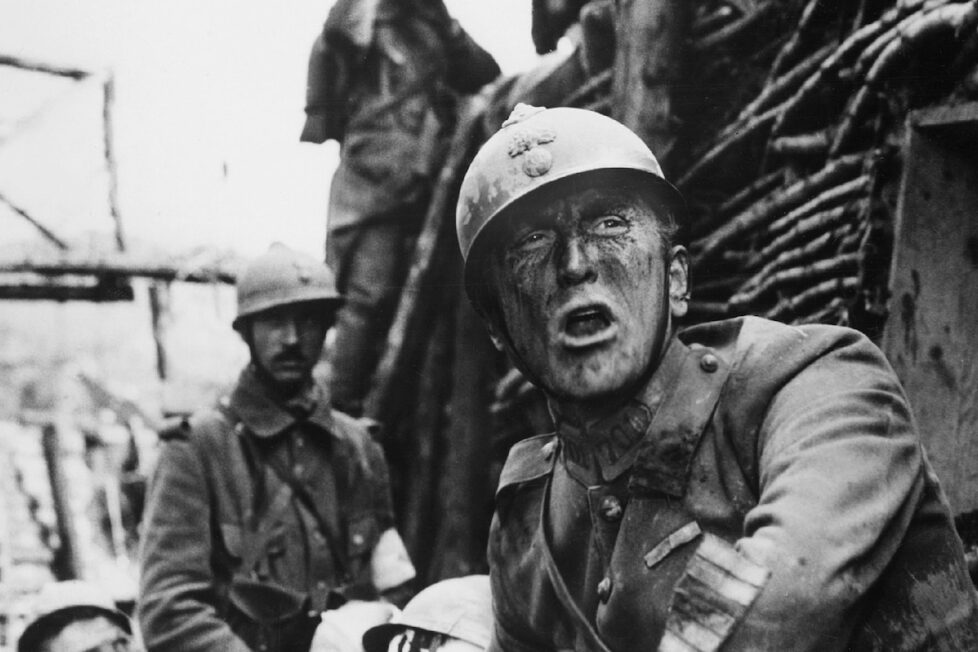
A French officer during the First World War must defend three men unfairly accused of cowardice at a court-martial.


In March 1958, most of the major Academy Awards were swept up by David Lean’s The Bridge on the River Kwai (1957). And a much smaller-scale war film from a little-known director named Stanley Kubrick received no nominations whatsoever. Paths of Glory was half the length of Kwai, dour and solemn, shot in black-and-white, and felt claustrophobic compared to Lean’s vibrant feast of Technicolor and CinemaScope.
At their core, both films featured somewhat similar characters: old-school army officers (Alec Guinness’s Colonel Nicholson in Kwai, George Macready’s Brigadier General Mireau in Paths) preoccupied with rulebooks and rigid concepts of honour. These officers were determined to achieve success, but within a narrow and petty definition of the term. In essence, their obsession with a limited view of what constituted “the right thing” led them to do the wrong thing.
There are certainly differences between the two. Nicholson evokes sympathy even when his actions appear to be bordering on madness, perhaps bearing a closer resemblance to Captain Queeg (Humphrey Bogart) in Edward Dmytryk’s The Caine Mutiny (1954). Mireau, on the other hand, is simply loathsome, driven by a more self-serving ambition. Nevertheless, it’s interesting to note that two of the year’s most notable films cast such a severe shadow on military leadership for similar reasons.
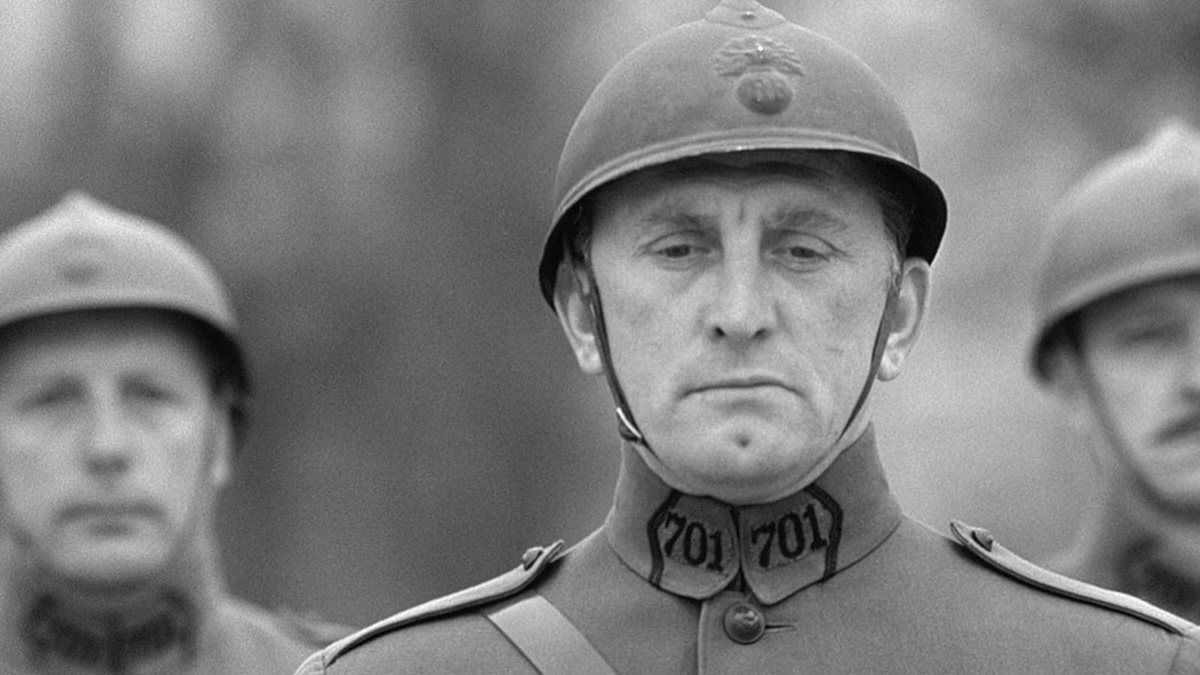
Perhaps World War II was far enough in the past that scepticism no longer seemed unpatriotic. There is also, surely, a palpable awareness in both films that the world was changing rapidly and that to remain trapped in old ways of thinking could be disastrous. Although not explicitly mentioned, class roles (as manifested in military rank) loom large in both Bridge on the River Kwai and Paths of Glory, and disunity among the soldiers is prominent.
The two films differ greatly, however, in their underlying attitudes towards the military in general, war in general, and the specific wars they depict. The Bridge on the River Kwai expresses no doubts about the righteousness of the war against the Japanese in the 1940s, nor the way it was generally conducted; Nicholson is an aberration whose flaws don’t alter the bigger picture. In Paths of Glory, by contrast, not only are Mireau and many other officers utterly iniquitous, but World War I itself, and perhaps all war, is implicitly condemned.
Kubrick insisted it was about warfare in general. He said he’d considered setting the story in an imaginary war, much like his directorial debut Fear and Desire (1952), where the conflict is never identified. “You could find the same events in any army anywhere in the world,” he told Cahiers du Cinéma in 1957, speaking of Paths of Glory. It wasn’t about the French army specifically either, he said: “War is capable of forcing men into making such terrible choices.”
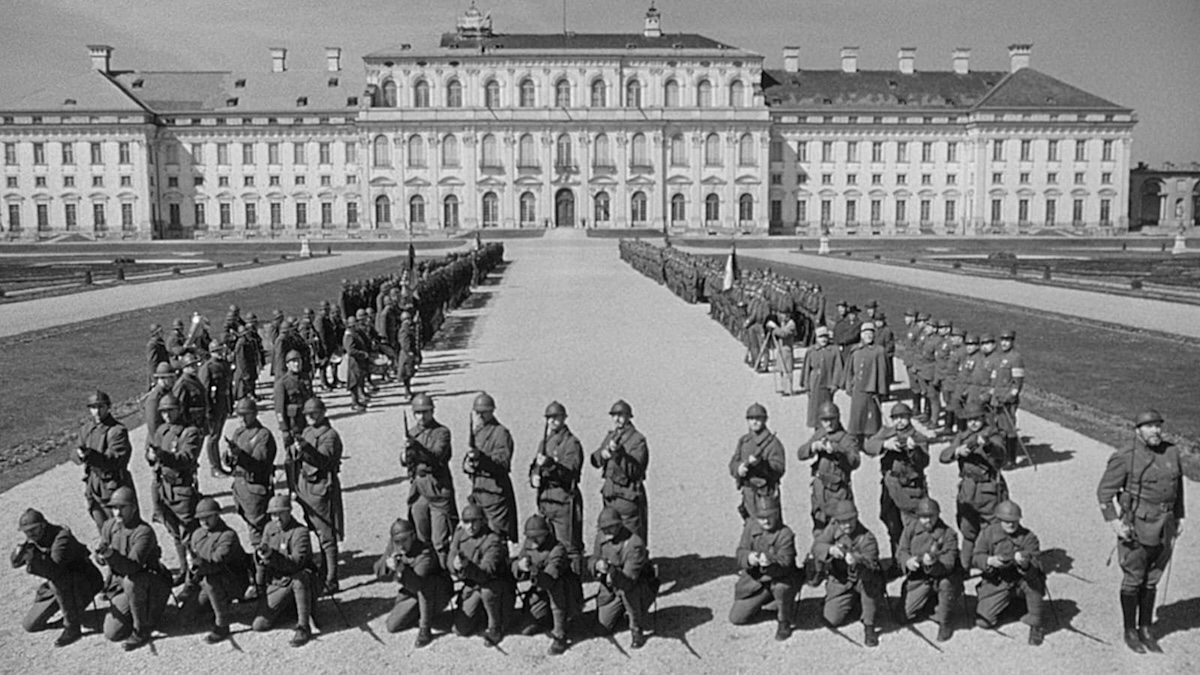
He would return repeatedly to the subject, examining war from different angles in Spartacus (1960), Dr, Strangelove: or How I Learned to Stop Worrying and Love the Bomb (1964), Barry Lyndon (1975), and Full Metal Jacket (1987). He also planned a film biography of Napoleon (which surely would have been more interesting than Ridley Scott’s 2023 dud) and indeed, it is probably only the legendary status of 2001: A Space Odyssey (1968)—not a war film—that has prevented Kubrick from being considered primarily a director of war pictures.
The differences between Paths of Glory and Fear and Desire, released just half a decade earlier, illustrate how rapidly the young Kubrick was developing as a filmmaker. The 1952 film is certainly sincere in its anti-war sentiment, but heavy-handed and prone to overstated melodrama. Paths of Glory, on the other hand, is tight and economical. A larger budget undoubtedly helped to smooth some of the rough edges, but there is also far greater maturity and self-control evident in Paths of Glory. In some respects, it has more in common with Kubrick’s The Killing (1956).
Both are slightly artificial—many scenes and passages of dialogue are noticeably designed to make specific points. However, this artificiality doesn’t feel like failed realism in the way it does in Fear and Desire. And while The Killing’s meticulous construction risks being pedantic, Paths of Glory avoids this entirely. It still packs a powerful punch, especially for first-time viewers who don’t know the ending. To avoid spoiling the plot, I’ll try to stay clear of major details, although discussing the film without going beyond the initial set-up is impossible. Mentioning the denouement (the lines from Thomas Gray’s Elegy Written in a Country Churchyard that provide the title are quite revealing too) proves difficult to avoid altogether.
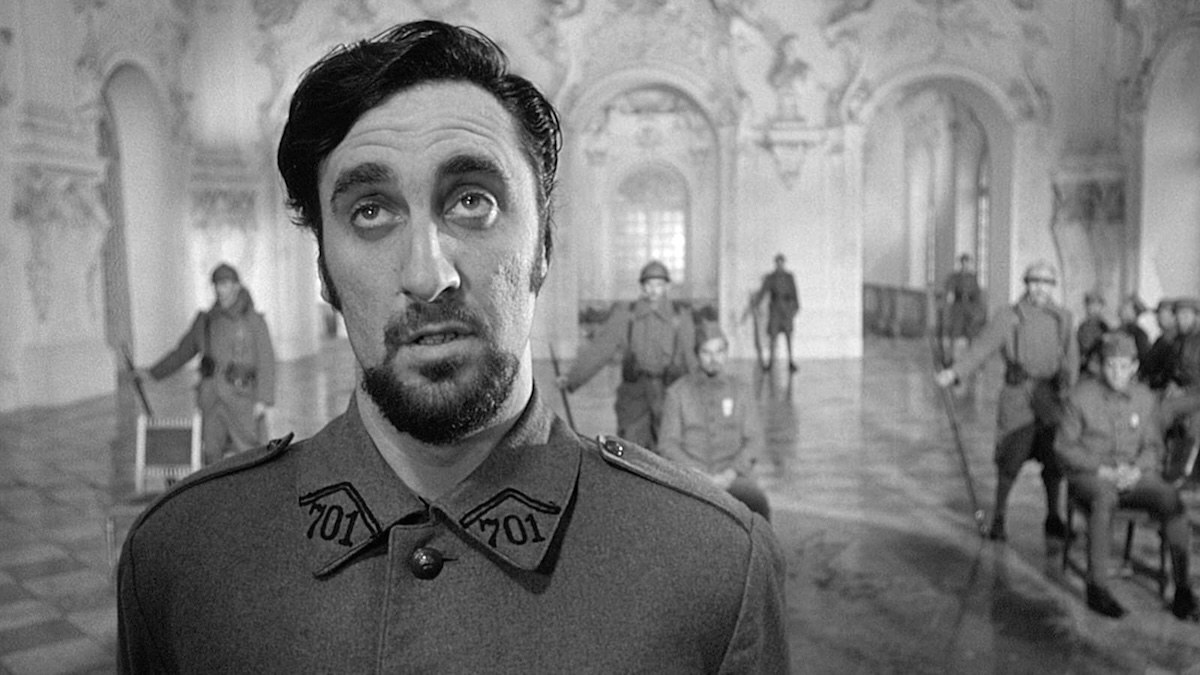
Paths of Glory was based on a novel by Humphrey Cobb, a World War I veteran, that had impressed Kubrick as a boy. Published in 1935 and soon afterwards adapted for the stage, the novel was itself based on a genuine incident involving French forces in 1915. While Kubrick’s eventual screen adaptation presented a less complex story than the true event and differed from Cobb’s novel in some ways (particularly in its greater emphasis on the character of Colonel Dax, played by Kirk Douglas), it retained the same essential structure. Set in 1916 on the Western Front with the French forces, the film begins before an attack on a German position, then depicts the failed assault, and concludes with the aftermath of the disastrous operation, including the court-martial of several soldiers.
Many anti-war films romanticise sacrifice and heroism, but Kubrick’s rejection of this approach is clear from the outset. The Marseillaise on the soundtrack degenerates into dissonance (supposedly a factor in France banning the film for almost 30 years). A voiceover describes how the war has become deadlocked, with both sides dug into trenches and only able to capture tiny pockets of territory at a vast cost of lives. This is contrasted with the luxurious chateau behind the front lines where the commanders live. “I try to create a pleasant atmosphere in which to work,” says Mireau, an affable host welcoming Major General Broulard (Adolphe Menjou); but his men come first, he adds, with heavy irony.
Soon, however, Mireau will visit the trenches to see Colonel Dax (Douglas)—a distinguished criminal lawyer in peacetime who now commands a regiment holding a small section of the front line. Mireau will pass on an order to Dax to capture a German position known as the Anthill. Dax opposes the attack on the Anthill, knowing it is doomed to fail (just as Mireau himself had been opposed until Broulard dangled the carrot of promotion). Nevertheless, the attack goes ahead, with the French fully expecting heavy casualties.
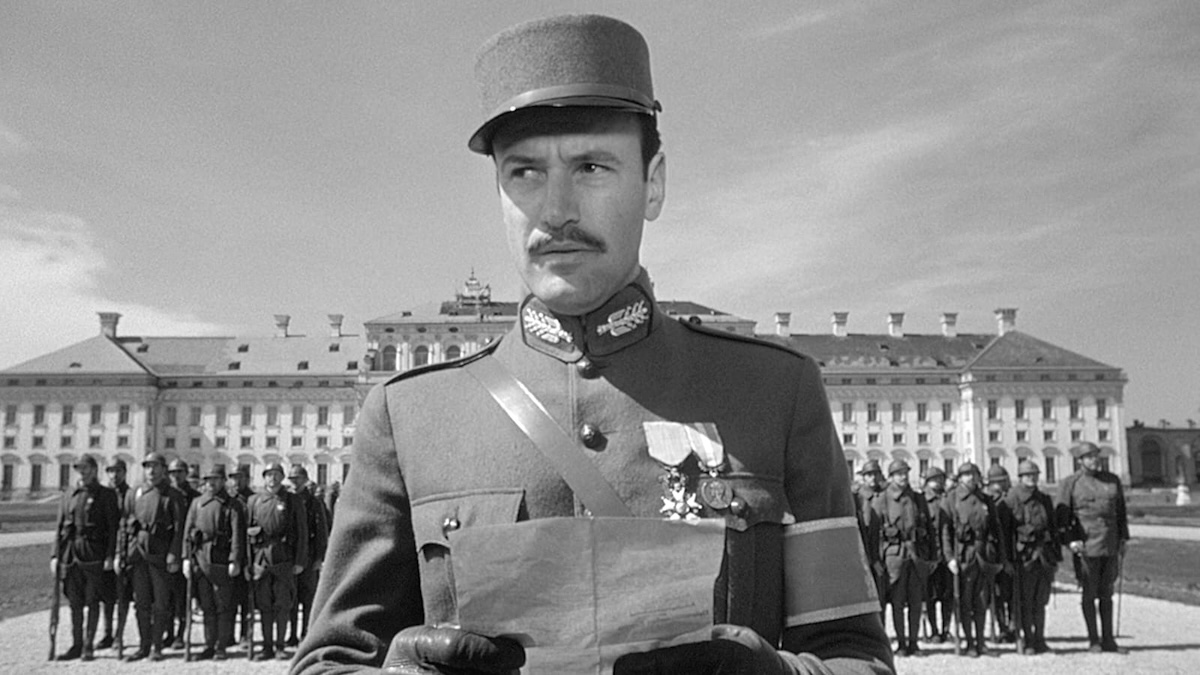
It’s a disaster. The position is too well-defended, the French are mown down in No Man’s Land, and some of those who should have followed the initial wave refuse to leave their trenches. Yet it is also a cinematically stupendous scene, indebted to a similar attack in Lewis Milestone’s All Quiet on the Western Front (1930) and foreshadowing the fluidity with which Kubrick would shoot the slave uprising in Spartacus. (Ironically, it was filmed using 800 German police officers standing in for French troops.)
Mireau is infuriated by the failure and orders a court-martial for a hundred men. Broulard persuades him to reduce this to just three, who will be made an example of. These three will be found guilty and shot. It’s patently clear that they did nothing wrong—one is selected by a junior officer because he knows something incriminating, another is a “social undesirable”, and the third is chosen by lot. But Mireau is adamant that there was no excuse for not fighting to the death in the assault on the Anthill. Indeed, in a moment reminiscent of Catch-22 (or Dr. Strangelove, although Paths of Glory isn’t as wildly satirical), he argues that only their deaths in combat could have proven that the attack was impossible.
Dax is given the thankless task of defending them, but the court-martial pays scant attention to the defence, and the verdict is no surprise. However, Paths of Glory is no less tense—perhaps even more so—after it’s delivered, and it now focuses closely on the three condemned men as well as Dax and his superiors.
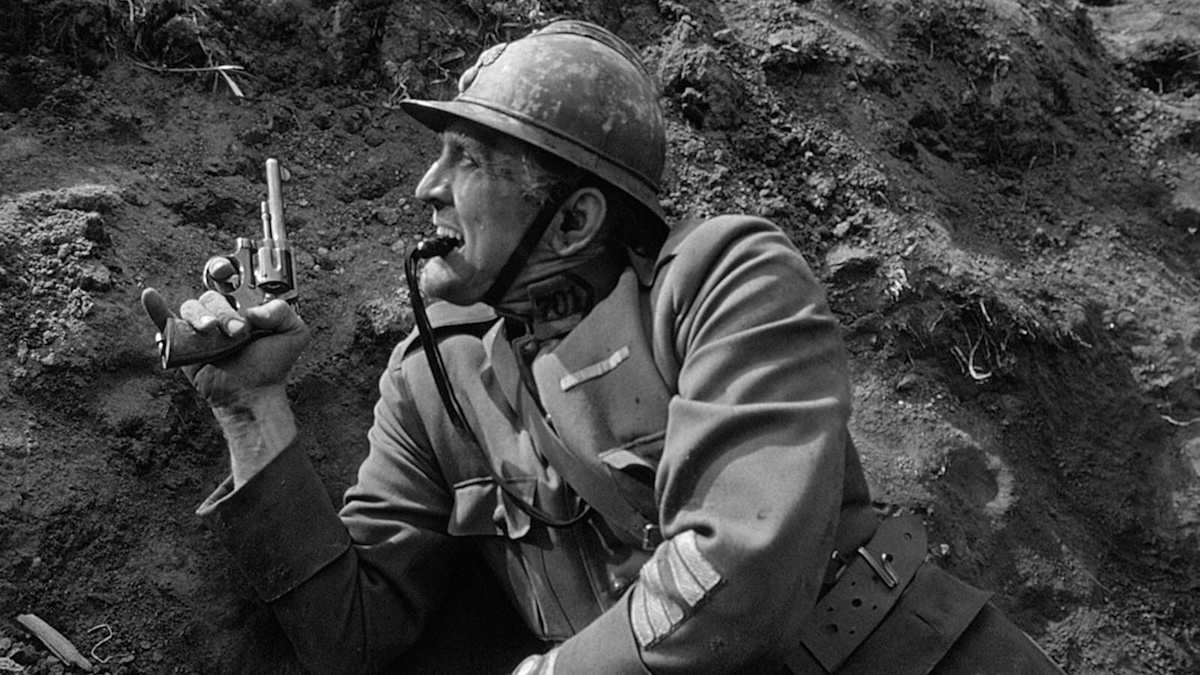
What follows takes place in far more confined environments, including a lengthy sequence within the men’s cell. Grand set pieces are largely absent until the very end, where a scene involving a multitude of extras unfolds in front of the château; this scene’s geometrical formality also foreshadows Barry Lyndon. Kubrick’s masterful visual storytelling remains undimmed, however. While Georg Krause, a veteran whose other films are now entirely forgotten, is credited as cinematographer for Paths of Glory, Kubrick likely made the key camera decisions. Indeed, he operated a handheld camera for the anthill battle scene.
It’s almost as if the young director was keen to try out as many camera techniques as he could in the relatively short film. However, they never feel forced; indeed, at times it’s the camerawork that brings a scene to life.
The opening scene with the two generals in the château, for example, is quite stagy in terms of dialogue but very fluid visually. Later, Kubrick used a single shot to follow Mireau along a winding trench—echoing the work of Max Ophüls, whom he admired, and perhaps inspiring Sam Mendes’s use of very long takes in his war film 1917 (2019). Another tracking shot, panning back and forth along the lined-up firing squad as they are briefed by their NCO, is almost as impressive, adding a striking sense of anticipation to what might otherwise be a routine scene. There is a distinctly noirish feel to the way the three “cowards” are filmed in their cell; in one particularly effective moment, a shaft of sunlight streams through the window but touches none of them.
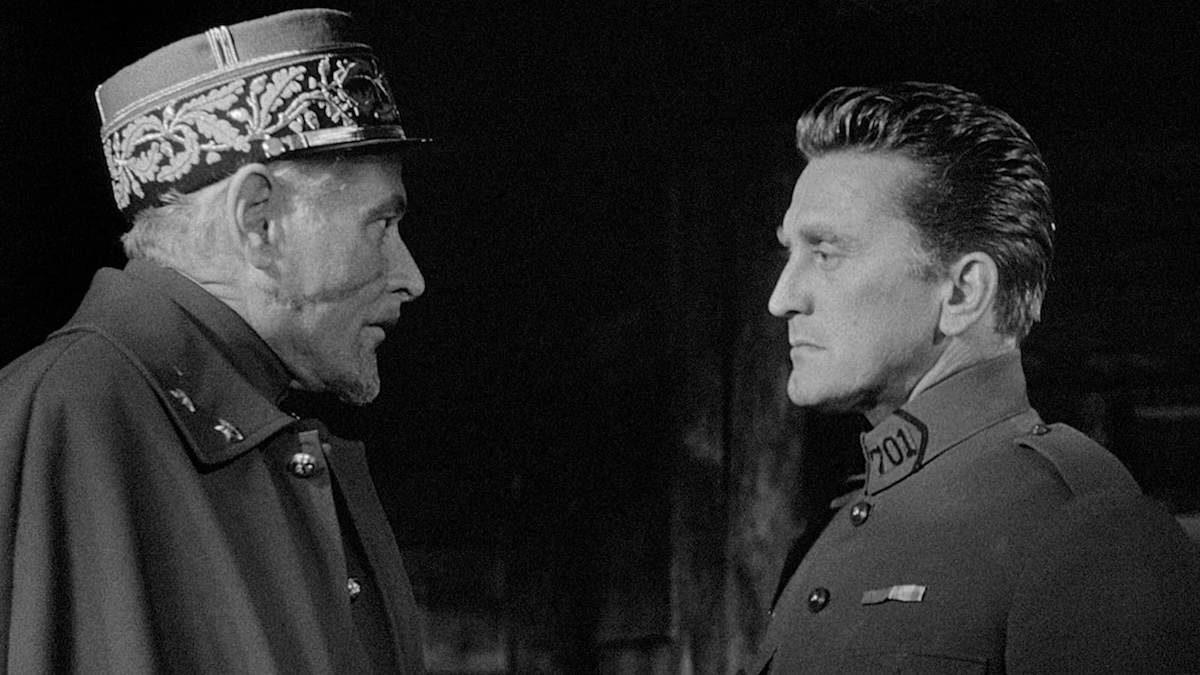
The musical score by Gerald Fried—who composed all of Kubrick’s films up to this point—also adds much atmosphere, particularly with its use of militaristic percussion. The effects soundtrack during the battle scene (relentless artillery and gunfire) is downright disturbing in its intensity. But despite the importance of visuals and sound, Paths of Glory remains fundamentally a film about what individuals do, and in all but the battle scene the emphasis is on them. Camera and music set their words and actions in context, rather than distracting from them.
Paths of Glory did attract some criticism for its use of American actors with American accents. However, I’m far from convinced that resorting to an ‘Allo ‘Allo!-style mock-French accent would have improved the film. The most interesting member of the cast, though, was Adolphe Menjou, who was half-French and convincingly Gallic. He appears to be the more moderate of the two generals, and Kubrick cast him because he was associated with playing likeable characters.
But it slowly becomes apparent that his suave bonhomie is superficial. He sends a fine dinner into the condemned men’s cell (as if it makes a difference), but he also says “there are few things more fundamentally encouraging and stimulating than seeing someone else die”. Though he doesn’t share Mireau’s arrogant fury at the “cowardly” lower ranks, what we finally realise is that while Broulard probably understands that the court-martial was unjust, he simply doesn’t care. It served its purpose; the end justifies the means; he even assumes that Douglas’s Dax is equally cynical.
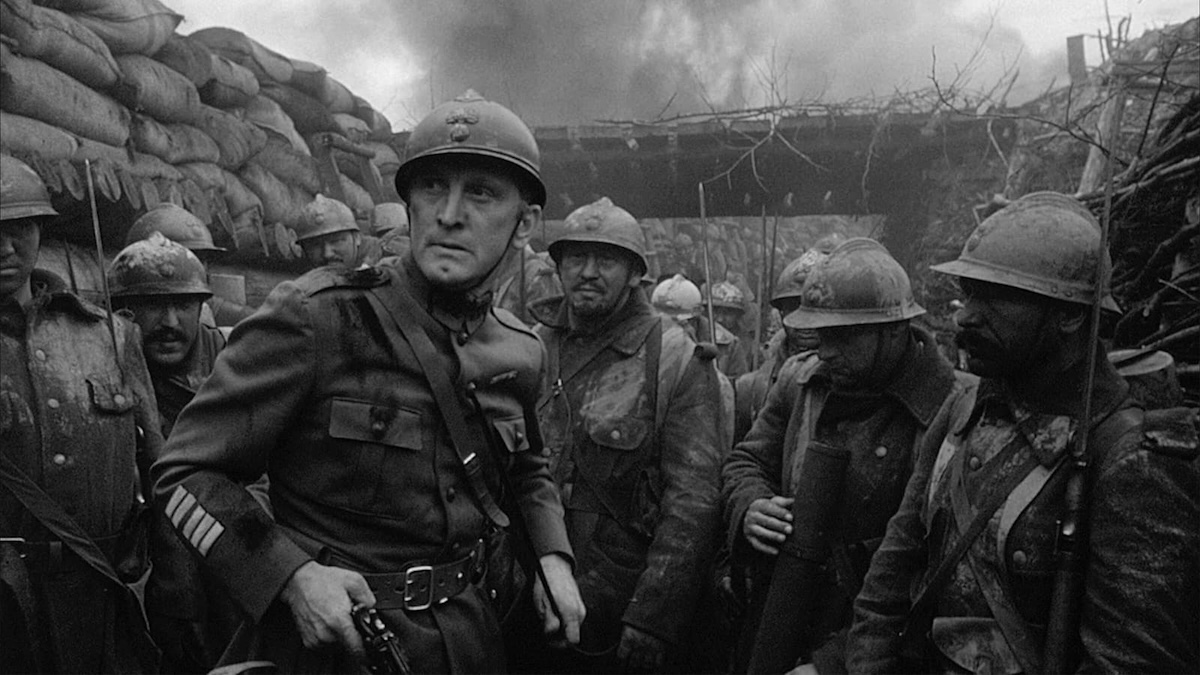
“Where have I done wrong?” asks Broulard, his line echoing Mireau’s absurd self-description as “the only completely innocent man in this whole affair”. The echo is doubtless intentional. Mireau is more conventionally objectionable and is played chillingly by Macready. His disgust at a shell-shocked soldier in the trenches would have been recognised as both heartless and irrational long before 1957. But the two generals are not that dissimilar.
Douglas, as Dax, was the only star in the film (and also instrumental in getting it made). Just a few years later, he would again star for Kubrick in Spartacus. However, he’s more convincing in Paths of Glory precisely because his character isn’t a rebel at heart. Dax is a thoughtful and compassionate man, but also an upstanding officer who obeys orders. Only when pushed to his absolute limit does he erupt briefly into insubordination.
In Spartacus, Douglas was never convincing as a charismatic visionary. His acting sometimes appeared mismatched with the extreme circumstances he faced, as though a desperate slave rebellion were an everyday occurrence. In Paths of Glory, however, his role is far better suited to his style of understated intensity.
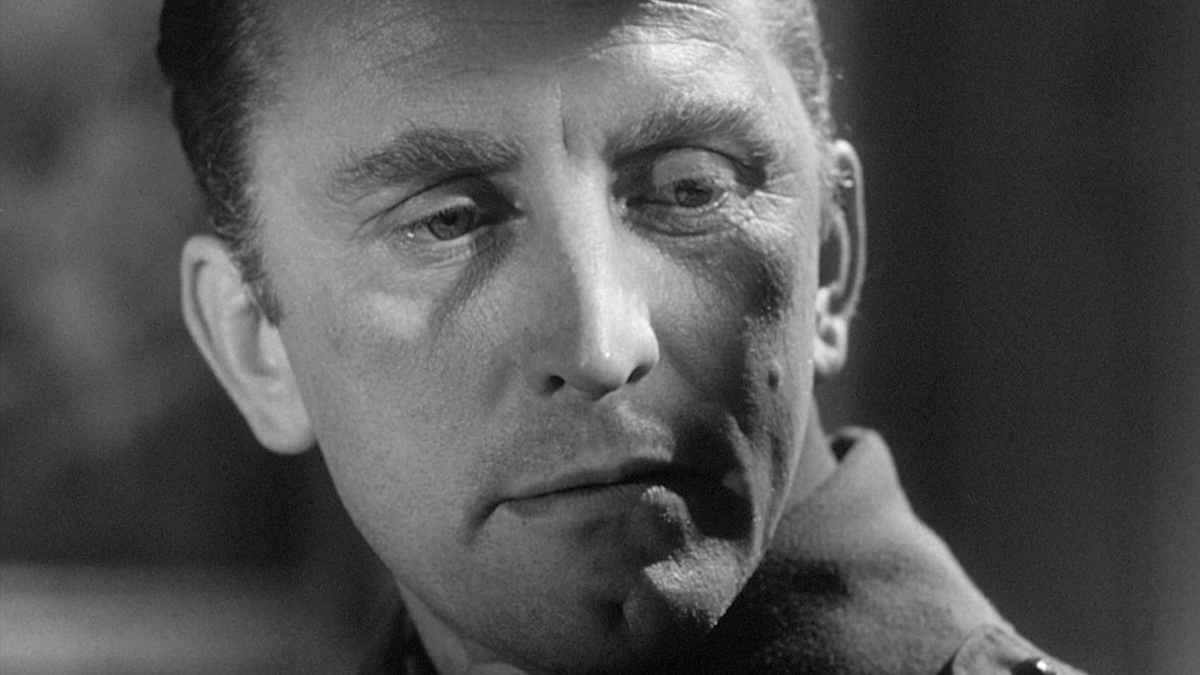
Beyond these three officers, other characters—even those facing the court-martial—have much smaller roles. However, many come across as believable people rather than mere cogs in the plot’s machinery. Wayne Morris excels as Lieutenant Roget, who makes a drunken mistake on a night mission that proves fatal for another soldier. Later, he tries to weasel out of commanding the firing squad, barely concealing his inner panic. Ironically, this is the only genuine cowardice on display in the film. Bert Freed is also memorable as the firing squad’s NCO, and Richard Anderson as the supercilious prosecutor at the court-martial.
Few WWI films since All Quiet on the Western Front have made much of an impact—-and indeed they still rarely do compared to WWII films. Perhaps this is because the conflict’s morality is murkier, because it wasn’t generally an existential struggle for entire countries, and because it didn’t have the spectre of the Holocaust looming over it. Howard Hawks’s Sergeant York (1941) was a huge hit, but it was a firmly patriotic film and much of its success can be attributed to WWII, which the US entered a few months after its release. John Huston’s The African Queen (1951) was a critical and commercial success too, but the war was almost incidental to the plot, and it was set in a minor theatre. The same applies to David Lean’s Lawrence of Arabia (1962)—technically it’s a WWI film, but few people would think of it that way.
In itself, this helps Paths of Glory stand out. So too does its emphasis on the military leadership, rather than ordinary soldiers. Other films, such as Powell and Pressburger’s The Life and Death of Colonel Blimp (1943) and Jean Renoir’s La Grande Illusion (1937), touched on similar ideas to Paths of Glory in their treatment of the Great War’s officer class. Richard Attenborough’s Oh! What a Lovely War (1969) would follow suit. But although the idea that the war on the Western Front was pointlessly wasteful of lives and that the rank and file had been betrayed by their leadership (“lions led by donkeys”) was far from new, it was still rare on screen.
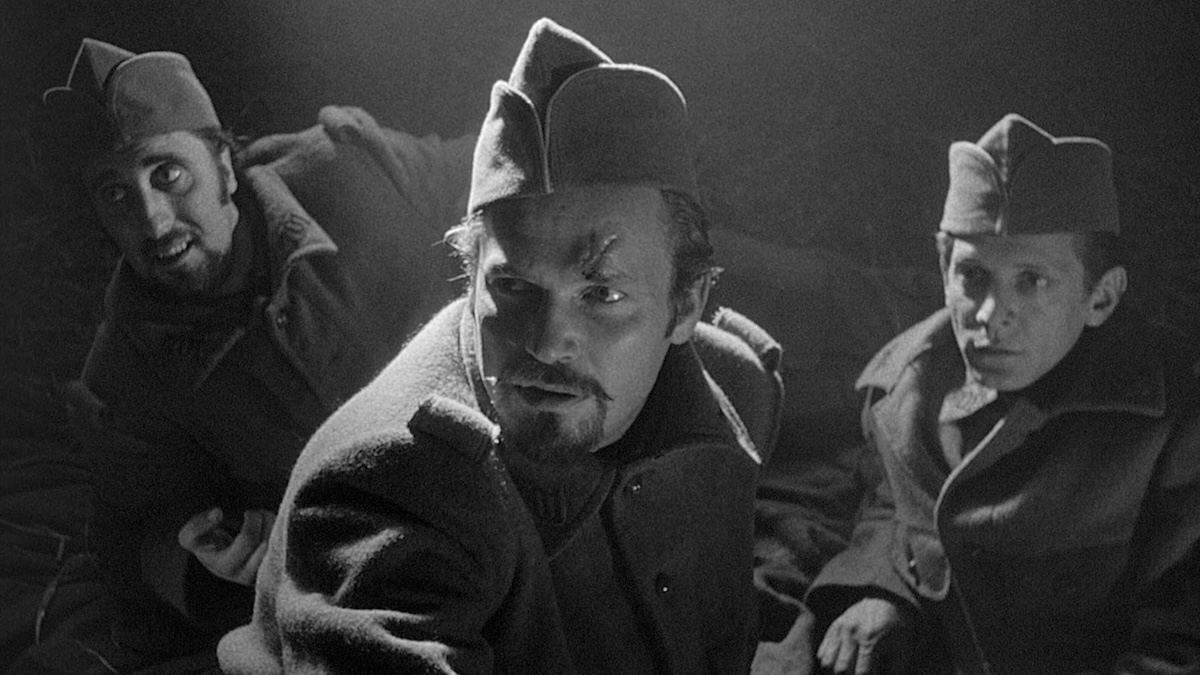
Of course, being unusual in subject matter doesn’t guarantee a great film. But it does help Paths of Glory to grab the audience’s attention immediately. Unlike many WWII combat films, these are not events we’ve seen played out a hundred times before. Kubrick’s filmmaking then maintains this grip expertly and steadily, right until the very end.
Kubrick might not have intended Paths of Glory to be seen as specifically about WWI, but no less a figure than Winston Churchill said it was a realistic portrayal of the Western Front. While its trenches and No Man’s Land are obviously staged to modern eyes, it’s hardly fair to criticise the film for that any more than it is to find fault with a different era’s acting styles. In any case, even if not every detail is convincing, the bleak atmosphere of danger, destruction, and deprivation is undeniably powerful.
Paths of Glory isn’t a hugely subtle film and surely wasn’t intended to be. The floor of the room where the court-martial is held resembles a chessboard, and we later see officers blithely waltzing across it with their ladies, oblivious to the game recently played there with men as pawns. The condemned men contemplate a cockroach, and how it will likely outlive them. And so on. Pauline Kael called it “simple-minded”, which is something of an overstatement but not without foundation. (She also praised its rhythm and urgency.)
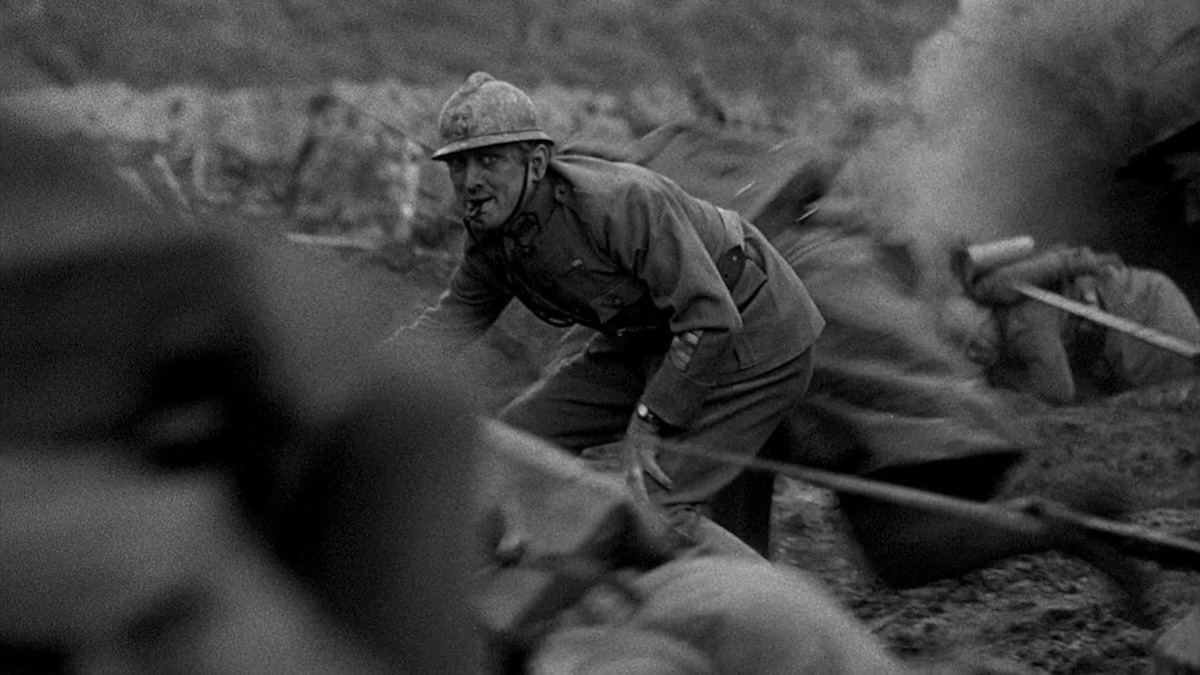
Kubrick does paint in broad brushstrokes at times. There are “big speeches” reminiscent of those in Spartacus and Fear and Desire. The characters of the three accused soldiers are representatives of different types. And, as in The Killing, language is very precise in furthering the plot and getting across to the audience what needs to be said; when one of the three accused soldiers becomes angry with the priest sent to their cell, he’s making a point that the film wants to make, not just angry because a man in that situation might be. But even if these aspects of the film aren’t entirely realistic, they add to its potency, and are not self-indulgently written or directed: David Thomson called the film “immaculately cold”.
Many less obviously signalled moments contribute just as much to conveying the film’s ideas. There’s the way Broulard, about to leave a room, changes his mind when Dax mentions an outrageous order issued by Mireau. There’s the horrifying remark by a medic after one of the condemned men is injured: when he’s shot, “the general wants him to be conscious”. And, quite differently, there’s the unexpected, rather odd ending where a semblance of normal, non-military life seems momentarily within grasp. Dax, as an officer, cannot partake of it with the lower ranks, but even so, the faintest smile appears on his face. It doesn’t right the wrongs that have gone before, but it does at least remind us that not all men are Mireaus or Broulards.
This was added rather late; a more conventional happy ending had been mooted for commercial reasons before being firmly rejected by Douglas, who recognised how much it would diminish the film’s meaning. Yet here, as in the rest of the movie, Kubrick isn’t simply searching for a cheap effect or a shock. Paths of Glory might be slightly overdone in some respects, but there’s no doubting the passion and anger that fuel this early masterpiece from a director who would go on to deliver so many more. These are what make it so utterly compelling—and at its most cruel, it’s devastating. It may be a short film, and largely a small-scale one compared to the likes of Bridge on the River Kwai, but it lingers in the mind as a truly great one.
USA | 1957 | 88 MINUTES | 1.66:1 | BLACK & WHITE | ENGLISH

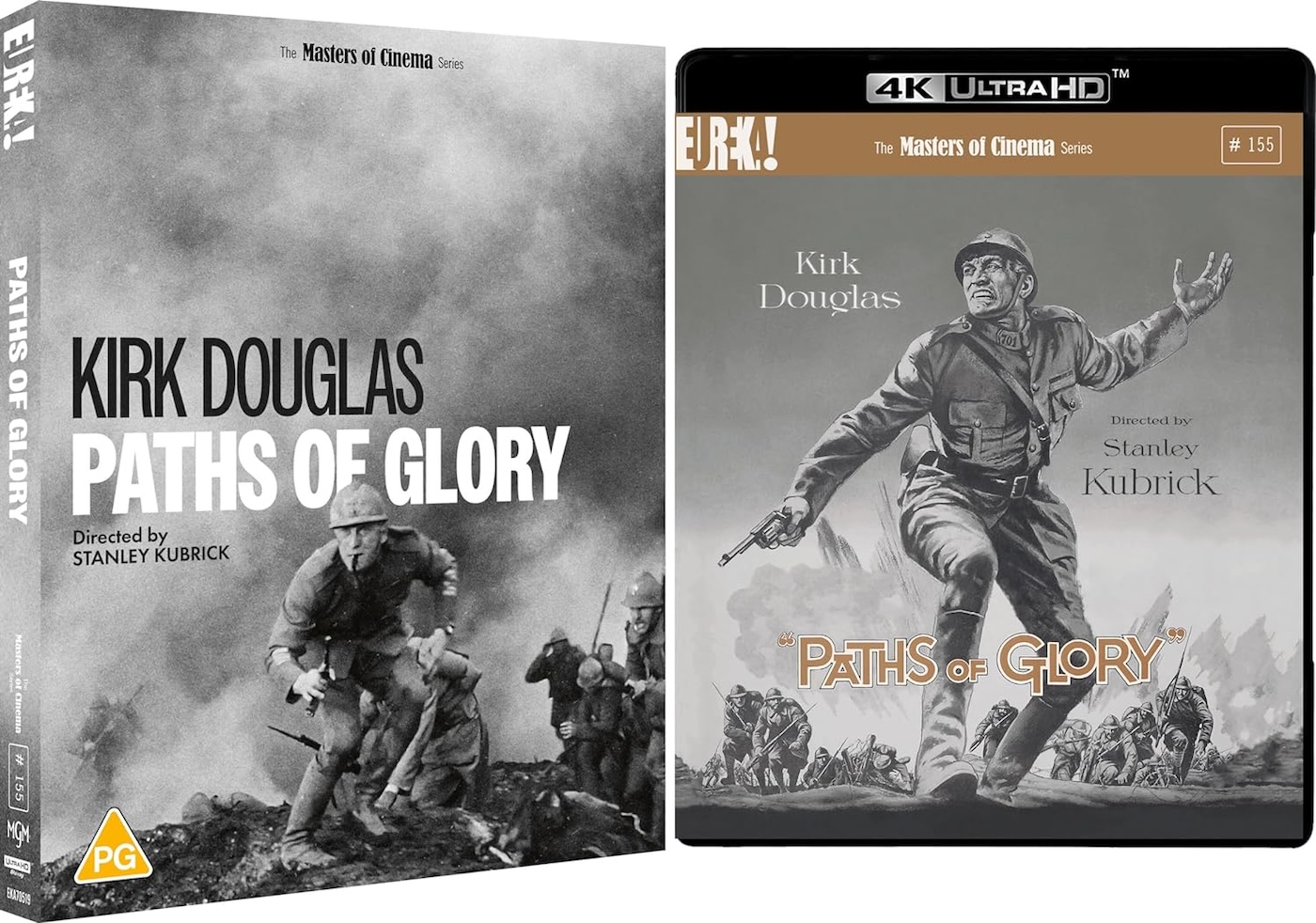

director: Stanley Kubrick.
writers: Stanley Kubrick, Calder Willingham & Jim Thompson (based on the 1935 novel by Humphrey Cobb).
starring: Kirk Douglas, Ralph Meeker, Adolphe Menjou, George Macready, Wayne Morris & Richard Anderson.
